Could the ‘paperpot transplanter’ be a boon for small farmers or is it just a gimmick?

How about a human-powered tool that allows you to plant out 264 young plants per minute (!) without bending over? The paperpot transplanter, developed in Japan, allows you to do just that (if 264 seems a bit precise, it’s because each little paper chain contains 264 pots).
The little paper pots come flat packed, and are pulled open and filled with potting compost. Seeds are sown into the little pots – you can do this by hand, but you can also get seeding trays that will deliver a seed to each pot in one go. When the seedlings are a couple of inches tall and ready to be transplanted, it’s time to put them into the transplanter. This is the interesting bit.
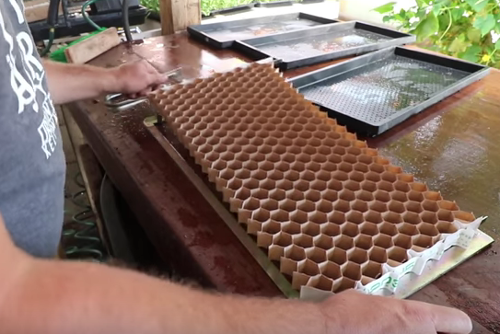
A little metal stake is placed at the end of where you want your row of plants to be in your prepared bed. The tray of paper pots is placed into the transplanter, and the end pot is pulled down into a guide. As all the pots are connected in a chain, all the other pots are pulled with it. The end of the chain is fastened to the metal stake, then you just walk backwards. The transplanter makes a furrow, the paper pots are pulled out into the furrow and the wheels of the transplanter push the soil to cover the roots of the plants.
That’s a very rough description, but here’s the transplanter at work:
Of course, because the pots are made of paper, they just decompose into the soil. There are chains of pots that allow spacing of 2, 4 and 6 inches – so ideal for most plants, apart from those that require wider spacing, like tomatoes or peppers.
There are models of transplanter developed for heavier soils. The paper pots are organic, but larger pots are also available that are treated with fungicide and can’t be used by organic growers.
However…..
A study was carried out by a small farm in New York state, in association with Cornell University, into the efficacy of the paperpot transplanter (you can see the study here). They saw the potential benefits of a quicker way to transplant, because direct seeding always meant more labour-intensive weeding for them (they don’t use herbicides).
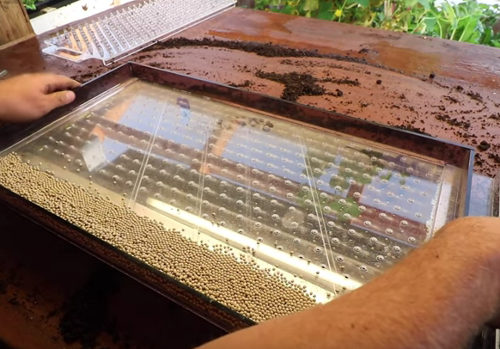
They had success with some crops, but not so much with others. Overall, they didn’t see much benefit over direct sowing or the usual methods of transplanting. The biggest problems they encountered were: transplanting takes more time than direct sowing, and often the directly-sown plants would out-perform the transplanted ones; if the seedlings got the slightest bit lanky / leaning over, they didn’t transplant well using the PPT; and it didn’t work too well on very heavy or stony soil.
They conceded that some small farms could see a bigger benefit – especially ones that already transplant a lot of their crops, grow a lot of cut-and-come-again greens, and have fine soil.
But – in their study, they transplanted crops that they mainly sow directly, like beetroot and spinach, and as sowing directly is quick anyway, it didn’t seem a fair comparison. They didn’t plant any of the crops that are most recommended, like onions or leeks. So it wasn’t entirely negative, and it seems that the PPT will be more valuable for some farmers than others, depending on their local situation and growing techniques.
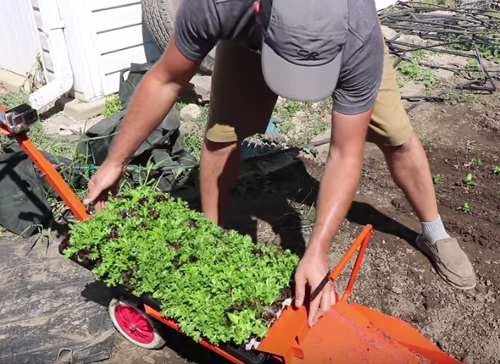
This trial was carried out in 2014, so I guess that if the paperpot transplanter really could help small farmers, it would be everywhere by now, and it’s not. Anyway, you have two opinions – for the guy in the video, it seems to have changed his life, but for the small farmers in the Cornell report, not so much. If you want to give it a go, you can order a paperpot transplanter from here:
Terrateck Paperpot Mini-cell Transplanter
It’s in France, where they manufacture some of the components themselves, so they don’t need to be imported from Japan. They seem to be the only distributor in Europe, and are much cheaper than importing from the States or Japan.
The views expressed in our blog are those of the author and not necessarily lowimpact.org's
16 Comments
-
1John Harrison September 7th, 2017
If it works as advertised – and that video is an advert! – then smaller market gardeners would have to at least give it serious consideration. Mind you, at ‘three thousand bucks’ it’s pretty expensive for what it is although I suspect the euro price would be a lot less.
It does tie you in to a system where you have to buy their paper pots.. so a major, long term committment.
I’ve passed this link on to a pal who market gardens – got to be worth a look!
The key to making a good living from enterprises is to be efficient and this system certainly looks labour saving.
-
2Peter Green September 7th, 2017
“It does tie you in to a system where you have to buy their paper pots.”
My first thought. Tied in – NOT opensource.
You can’t (or maybe you can) make the consumables yourself.
-
3Dave Darby September 8th, 2017
You might be able to if you’re handy – but it might be easier to buy them. It’s not all about open source – lots of consumables (including food) I just want to buy, from a co-op if possible.
-
4John Harrison September 8th, 2017
Dave – did you manage to get a price from the French site – it doesn’t seem to have the UK on the list when you try to register
-
5Dave Darby September 9th, 2017
only the prices in euros at the bottom of the page
-
6Alex September 27th, 2017
Hi!
We are also distributors located in Spain, you can visit our website:
http://www.agrointenium.com
-
7John Harrison September 27th, 2017
the link doesn’t appear to work ?
-
8David June 15th, 2018
I purchased the French version of this… I am a 4th generation small farmer (4 Acres). Poorly designed gimmick. Doesn’t really work at all like you see in the videos. I managed to get it to perform in what I would call an acceptable manner by making some modifications to the unit. Seemed like a good ide a for radishes and beets, but the paper pot cells restrict growth as they do not biodegrade nearly fast enough… consider that when tilling to plant a second crop in the same row in the same season.. .paper fragments everywhere, so the row is filled with trash, meaning the machine works even worse due to debris. $1600 USD to get set up with the system… worst investment I’ve ever made for the farm. 1st crop of beets and radish was a total loss. Do it the old fashioned way.. more labor, but at least you get something.
-
9Ruben B August 7th, 2018
Been considering to buy this for a couple of years now. As a starter i didnt see it as a sensible investment. Now im at a point where it seemed worth it, but am happy ive found this article and the comments on it.
I had suspicions since curtis stone started promoting it. He used to put everything in landscape fabric claiming it saved him tons of work. Then suddenly he starts using the paperpot claiming its a miracle tool. When you take a closer look you will find out he is actually part of the company that imports and sells the thing in north amerika. The company that just happened to start existing the moment he starts promoting it. The guy is so obvious. I cant believe ppl fall for his 4k$ workshops and online courses.
Anyway. I now know i dont need to buy this thing. Also from what i read the paperpotchains are not organic cerrified due to a component in it (glue).
Thanks for the article.
-
10Steve June 13th, 2019
I know this is an old article, but one of the few I could find that calls out this product for what it is. It is an overpriced gimmick and has all the hallmarks of suck to anyone that looks at it properly. It is very roughly made of simple materials, yet somehow costs a ridiculous amount of money. Total manufacturing cost at scale couldn’t top more than $100 per unit. Then they want you to buy consumables from them in perpetuity and these also are priced outrageously compared to their manufacturing cost at scale. And to their detractors they use the common strawman argument of, “If you can do better, then make them yourself and sell them.” Of course this is a BS argument and they know it. Just because I am not manufacturing the same item for sale, doesn’t mean I can’t recognize a scam when I see it. There is no value correlation between the cost of making the item and how much you are charging for it. That is a bad deal for a customer no matter what the product. Most of the tools you find in this niche industry are like this. 30″ row based equipment, semi-automated greens cutters, etc.
Then you have to look at the people that are promoting them. They are the types of people that are trying to monetize every single aspect of everything they do. You have complete charlatans like Curtis Stone and Diego Footer in the US. Then you have guys like Richard Perkins in Sweden pushing it as well. Of course they also have a vested interest in them because they are selling them, while promoting them in all their video content. This year Richard even said that he doesn’t recommend them for early or late plantings in cold climates and they lost crops due to using it. These are also the types of guys that employ slave labor (aka unpaid interns, some of whom actually pay them!). They write books and do videos and classes instead of actually making money at what they are doing as farmers. Richard actually does a fair bit of work, and his Youtube videos are more amateur documentation, but he does try to monetize everything he does. I guess you can’t ultimately blame people for just being selfish, which is natural, but they all pretend in some way that they are going out of their way to help people, which is pure BS. They are in it for the profit and ego stroking. This is the ultimate pitfall of a lot of these small organic farming farms.
And don’t you dare make the mistake of criticizing these demigods to their rabid followers or you will feel their wrath in mean comments or more likely censorship of your ideas.
-
11Diego August 17th, 2019
@Steve It’s interesting that instead of having actual criticisms about the system you just have to go the route of personal attacks. I think your observations around the cost of a transplanter are interesting and do show a lack of experience in manufacturing products at scale. While one person might be able to build anything cheaply using scavenged metal, parts, and free time, when you move to a production situation those numbers don’t translate. And yes there is a markup for profit because there has to be to cover all the costs that go along with producing.
For every @David who might not take the time to perfect using the tool I can refer you to 10 farmers who have mastered the tool and had it change their farm. The technology has been around for 30+ years and has been used extensively in Japan by thousands of farmers over that whole time period. If it didn’t work then they would have fallen from the market a long time ago.
The comparison to direct seeding is not a fair comparison. Of course direct seeding is faster. Of course you should direct seed over transplant when possible. The more appropriate comparison is comparing hand transplanting to paperpot transplanting. It is FOR SURE faster and there for means LESS labor is required. Despite that the system might not be a fit for every farm.
If anyone has some actual concerns or questions, I am happy to address them and give actual answers instead of conjecture.
-
12Will September 7th, 2019
Dave I agree with you that Curtis Stone is a charlatan. He is a man with a light complexion and never appears to be tanned. How can you farm long hours out in the elements …. unless he uses tons of sun blocker….. or else he actually is not putting in those long hours. I have been skeptical of him right from the beginning. The market farmers who are actually making it never brag about what they are making in income.
The planter is way over priced and I am surprised someone has not come out with a reasonable clone.
Actually I am experimenting building a better tool which still uses the paper pots….. but I am not out to get rich or scam !!!
-
13Ernst January 15th, 2020
@Will Let us know about your home-built tool using the paper pots! Keen to know more about it!
-
14Rich March 6th, 2021
I know this is an old article but there aren’t many U.K. articles about this. I got given one of these on a long term loan mid season last year by someone who had bought but never used it. We do a lot of transplanting to fit in successional sowings and we are on extremely sandy soil. I have used it so far for beetroot, lettuce, endive, brassica salads, lambs lettuce, spring onion, winter purslane, Florence fennel, parsley. After getting the hang of it I really like it. Planting is quick. On sandy soil, planting last summer I had to irrigate more while plants were settling in. It was worth that minor inconvenience. The pots are very expensive but I was planting more crops than I would have had time for with conventional transplanting so I believe it was worth it.
-
15Rich March 7th, 2021
* It also worked well for spinach and chard (I forget to mention them in my previous comment).
-
16Matt May 19th, 2021
I have thr ppt… for the price its garbage. Great concept, but you basically better get 20 dump trucks of perfectly screen topsoil. Even the littlest rock or lump jams it up bad. Takes a few minutes to do a tray. But then about 30 minutes or more to correct the row. in about an hour i could transplant by hand and have perfect results without the fuss of lugging around this overpriced hunk of junk.. trust me.. dont bother.




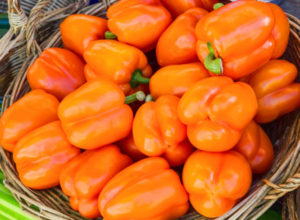 Fruit & vegetable growing guide for September
Fruit & vegetable growing guide for September
 The laya: wonder tool
The laya: wonder tool
 Starting a market garden: Q&A with Chris Smaje of Small Farm Future
Starting a market garden: Q&A with Chris Smaje of Small Farm Future
 Flower growing
Flower growing
 Smallholding
Smallholding
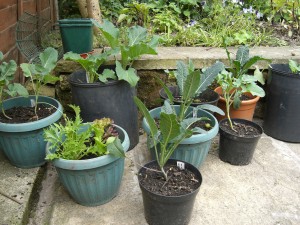 Urban / small space gardening
Urban / small space gardening
 Vegetable growing
Vegetable growing


